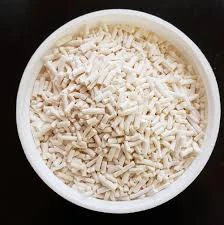
indirect food additives
Understanding Indirect Food Additives What You Need to Know
In the realm of food science, the term indirect food additives refers to substances that may come into contact with food but are not intentionally added to it. Unlike direct food additives, which are intentionally included in food for preservation, flavor enhancement, or other purposes, indirect additives are often the result of packaging, processing, or environmental exposure. While they may not be added for the purpose of altering food traits, their presence can affect food safety, quality, and consumer health. Understanding these substances is crucial for both manufacturers and consumers alike.
Sources of Indirect Food Additives
Indirect food additives can originate from various sources, primarily packaging materials, processing equipment, and environmental contaminants. For instance, compounds such as heavy metals, plasticizers, and residual solvents can leach into food from packaging materials. These unwanted chemicals can result from several factors including temperature changes, the age of the packaging, and the type of food being stored. Foods that are acidic or oily may be particularly prone to interactions that lead to the migration of these substances.
In addition to packaging, equipment used in food processing can also contribute to the presence of indirect additives. Cleaning agents, lubricants, and even parts of machinery made from certain metals can introduce contaminants that make their way into food products. Furthermore, environmental sources, such as pesticides or pollutants in water, soil, and air, can also lead to the unintended incorporation of various chemicals into our food supply.
Regulation and Safety Assessment
Regulatory bodies such as the U.S. Food and Drug Administration (FDA) and the European Food Safety Authority (EFSA) have established guidelines and safety assessments for both direct and indirect food additives. Although indirect additives are not specifically added to food, regulatory authorities assess their safety based on the likelihood and levels of migration into food products. This assessment takes place through rigorous scientific testing, which considers the nature and source of the additive, as well as potential exposure levels for consumers.
indirect food additives

Despite these assessments, there remains a significant level of concern regarding the safety of certain indirect additives. Chemicals like bisphenol A (BPA) and phthalates have garnered public attention due to their potential health impacts. Research has shown that these substances may disrupt endocrine function or lead to other adverse health outcomes. Consequently, many manufacturers are now seeking alternatives to traditional materials, enhancing their commitment to food safety and consumer preference.
Consumer Awareness and Mitigation Strategies
Consumers can take proactive steps to reduce their exposure to indirect food additives. One of the most effective measures is to be mindful of packaging. Opting for fresh, minimally processed foods can often reduce the risk of indirect additives, as they are less likely to be packaged in materials that contain harmful substances. Additionally, storing food in glass or stainless steel containers can help minimize the migration of harmful chemicals from plastic packaging.
Reading labels and being informed about food sources is also key. There is a growing trend toward transparency in food labeling, with many companies now disclosing potential contaminants and the materials used in packaging. Increasing public awareness of these issues encourages manufacturers to prioritize safety in their packaging choices.
Conclusion
Indirect food additives are an important yet often overlooked aspect of food safety. Understanding their sources, regulatory context, and potential effects enables consumers and manufacturers alike to make informed decisions. By being aware of how food is packaged and processed, individuals can take steps to protect their health and contribute to a safer food industry. In a world where food integrity is paramount, continued dialogue and research will be essential to navigate the complexities associated with indirect food additives.
-
Buy High-Quality Trichloroisocyanuric Acid for Sale | TCCA 90% SupplierNewsAug.30,2025
-
Pure Sodium Dichloroisocyanurate Dihydrate | Powerful DisinfectantNewsAug.29,2025
-
Industrial Chemicals: Quality & Purity for Every IndustryNewsAug.28,2025
-
Nitrile Rubber Honoring Strict Production StandardsNewsAug.22,2025
-
Aspartame Ingredients Honoring Food Safety ValuesNewsAug.22,2025
-
Fertilizer for Balanced Plant NutritionNewsAug.22,2025
-
Cyanide Gold Processing with High Purity AdditivesNewsAug.22,2025
Hebei Tenger Chemical Technology Co., Ltd. focuses on the chemical industry and is committed to the export service of chemical raw materials.
-

view more DiethanolisopropanolamineIn the ever-growing field of chemical solutions, diethanolisopropanolamine (DEIPA) stands out as a versatile and important compound. Due to its unique chemical structure and properties, DEIPA is of interest to various industries including construction, personal care, and agriculture. -

view more TriisopropanolamineTriisopropanolamine (TIPA) alkanol amine substance, is a kind of alcohol amine compound with amino and alcohol hydroxyl, and because of its molecules contains both amino and hydroxyl. -

view more Tetramethyl Thiuram DisulfideTetramethyl thiuram disulfide, also known as TMTD, is a white to light-yellow powder with a distinct sulfur-like odor. It is soluble in organic solvents such as benzene, acetone, and ethyl acetate, making it highly versatile for use in different formulations. TMTD is known for its excellent vulcanization acceleration properties, which makes it a key ingredient in the production of rubber products. Additionally, it acts as an effective fungicide and bactericide, making it valuable in agricultural applications. Its high purity and stability ensure consistent performance, making it a preferred choice for manufacturers across various industries.





